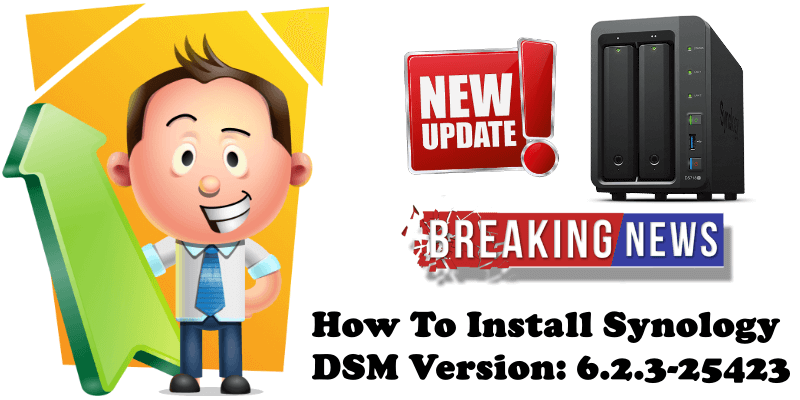
I happened to notice that Synology has released a very important update called DSM Version: 6.2.3-25423. The update is expected to be available for all regions within the next few days or months, although the time of release in each region may vary slightly. This update will restart your Synology NAS.
Important Note
This update has been recalled on May 13 2020, since the search function across the system might fail if you have encrypted shared folder and Synology Universal Search 1.4.1 or earlier on your DSM 6.2.3. The issue has been fixed in 6.2.3-25426. You can download the new version 6.2.3-25426 directly from Download Center.
What’s New in DSM 6.2.3-25423 ?
- Removed the support for Google Cloud Print in DSM 6.2.3 and above.
- To avoid the interruption of iSCSI service, the automatic DSM update and your power schedule to shut down may not be executed as expected if there are any active iSCSI sessions.
- Removed TWNIC from the list of DDNS service providers on DSM 6.2.3 since TWNIC will stop accepting new registrations for DSM as of Jul. 1, 2020. Your current TWNIC DDNS services can still be used and edited but will not be available again once deleted from DSM.
- This is the last major DSM version (6.2) that supports the video conversion to .flv and MPEG-4 Part 2 on certain models (RS814, RS214, DS414, DS414slim, DS414j, DS216se, DS215j, DS214+, DS214, DS214se, DS213j, DS120j, DS119j, DS115, DS115j, and DS114) in consideration of the termination of Adobe’s support for Flash Player by the end of 2020.
- Thin Provisioning LUN will become protected upon insufficient volume space, preventing clients from writing data to the LUN while allowing read-only access to the existing data.
- Added support to sign in to DSM using a UPN (user principal name) of a domain via web portal and file protocols.
- Added support for the option of forcing password changes for importing local users.
- Enhanced the compatibility of the imported user list, providing clearer error messages when the imported file contains syntax errors.
- Added support to record only the events of SMB transfer selected by the user, providing transfer logs that meet the requirements more closely.
- Added support for client users to monitor the changes of subdirectories under shared folders via SMB protocol.
- Added details of desktop notifications to facilitate users’ timely responses.
- Added support for external UDF file system devices.
- Added support for the Open vSwitch option in a high-availability cluster.
- Added support for IP conflict detection, providing logs and notifications accordingly.
- Added support for Let’s Encrypt wildcard certificates.
- Added support to waive the need of DSM login again through an HTTPS connection after a change in client’s IP address.
- Added support for hardware-assisted locking for Thick Provisioning LUN on an ext4 volume.
- Added support for customized footer message on DSM login pages.
Fixed Issues
- Fixed the issue where certain cities might be mapped to incorrect time zones.
- Fixed the issue where LDAP users could not be notified of the upcoming password expiration.
- Fixed the issue where the upload of LDAP certificate could not overwrite the original one with the same file name.
- Fixed the issue where the application permissions settings might not be applied properly to the Domain Users group when such group in Windows AD domain was named other than “Domain Users”.
- Fixed the issue of inaccurate time of usage history in Resource Monitor.
- Improved system responsiveness by reducing the latency of the Btrfs file system in certain scenarios.
- Fixed the issue where SNMP did not provide the indices of Disk and RAID correctly.
- Fixed the issue where the recycle bin of an encrypted shared folder might not be emptied properly.
- Enhanced the DSM login performance for multiple concurrent logins.
- Adjusted the personal notification mechanism to comply with the latest Gmail API.
- Fixed the issue where the iSCSI service might be interrupted when the LUN backup task is stopped.
- Removed the function of expanding the capacity of a block LUN.
Known Issues & Limitations
- Access to DSM via HTTPS using Google Chrome on a client device running macOS 10.15 might fail after a DSM update from an older version.
Step by step guide on how to install DSM version 6.2.3-25423
STEP 1
Go to the official Synology archive page and download the appropriate .PAT file package for your NAS. Follow the instructions in the image below.

STEP 2
Upload the .pat file in your DSM. See the screenshot below. (Learn how to manually update your Synology Nas). What is a .PAT file? It’s a system file extension used by DiskStation Manager (DSM), the operating system used for Synology NAS devices; it contains the files required to install or update the low-level operating system software that runs the device; it can be used from the DSM Control Panel by choosing “Update & Restore” and then the “DSM Update” option.
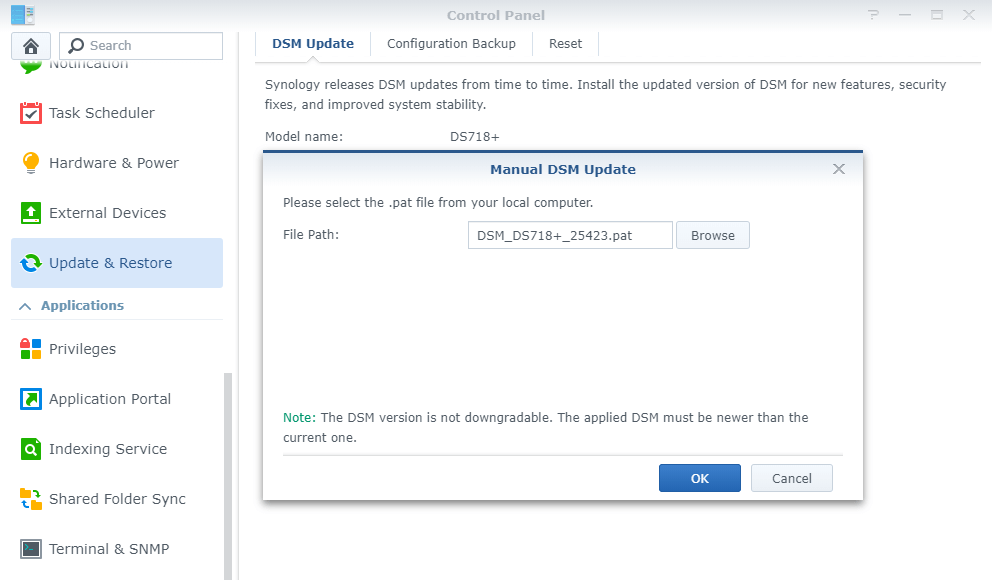
STEP 3
The actual update began within a few minutes and lasted about 5 minutes, then my device was restarted.

STEP 4
Once your Synology NAS is restarted, you will see this window where Synology tells you to allow them to anonymously analyze your NAS device. Select the last option that says “No Thanks!“.
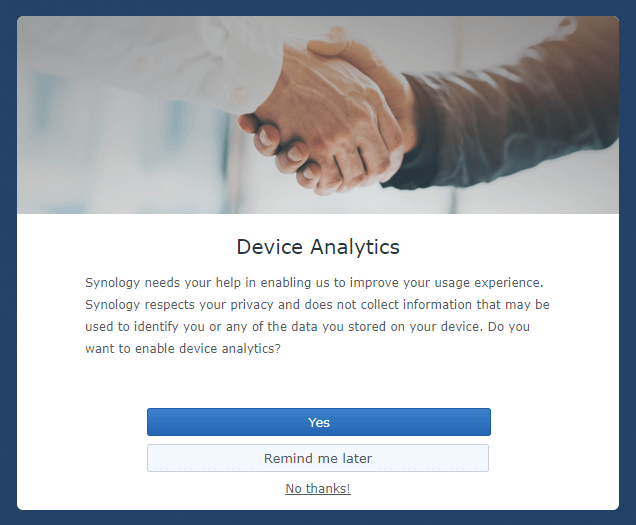
STEP 5
Finally returning to my device’s Control Panel, I saw the DSM Version 6.2.3-25423 update was correctly installed.
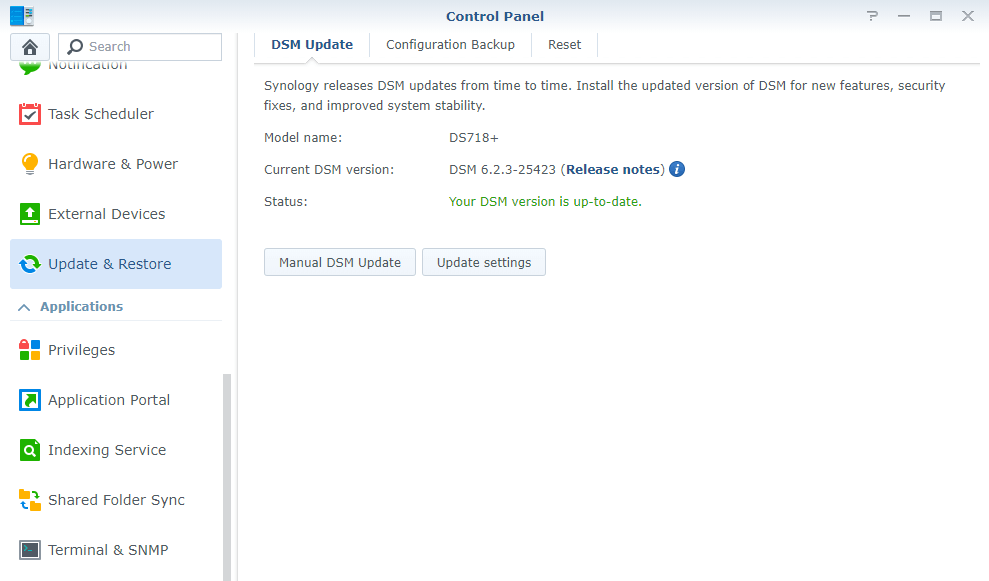
Note: You know when you first install DSM on your Synology NAS that you’re asked to agree to the Terms of Service? Well, with this new version, you’re asked again. That is, after installing DSM 6.2.3-25423, when you access the Synology Package Center, you’re asked once again to agree to the Terms of Service. The only thing to do is to agree to the Terms of Service and everything will run smoothly from there on.
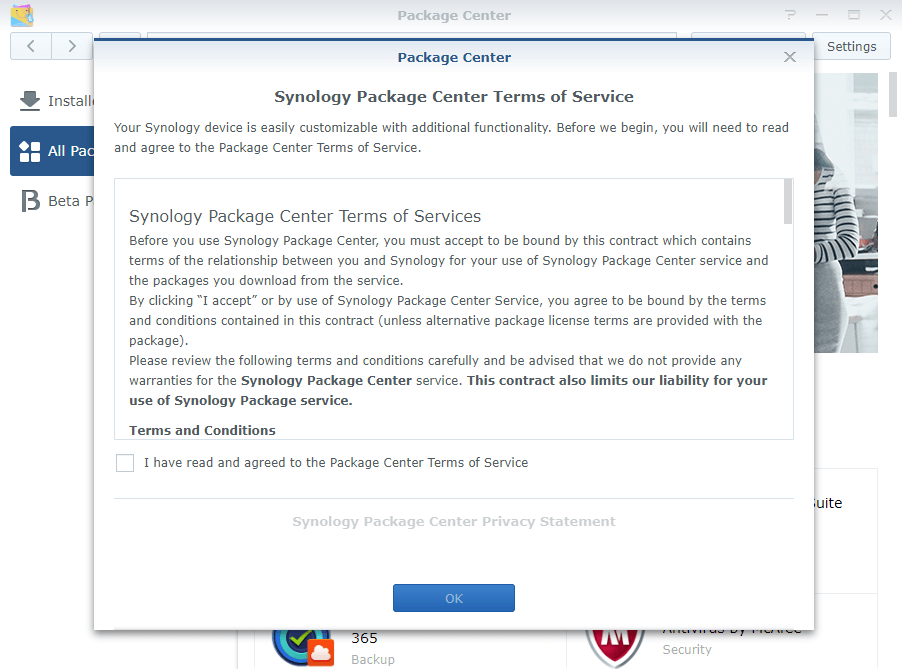
I hope this little guide will help you in the future so you too can download the latest manual updates without worrying about waiting for the automatic update. In some cases, the automatic update released by Synology can take weeks or months until it’s available.
This post was updated on Thursday / May 14th, 2020 at 1:41 AM
